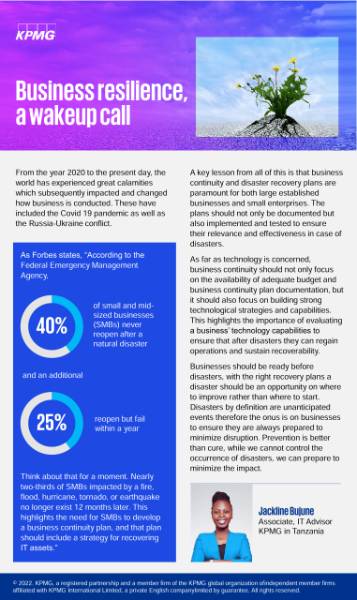From the year 2020 to the present day, the world has experienced great calamities which subsequently impacted and changed how business is conducted. These have included the Covid 19 pandemic as well as the Russia-Ukraine conflict.
As Forbes states, “According to the Federal Emergency Management Agency, 40% of small and midsized businesses (SMBs) never reopen after a natural disaster 25% reopen but fail within a year and an additional
Think about that for a moment. Nearly two-thirds of SMBs impacted by a fire, flood, hurricane, tornado, or earthquake no longer exist 12 months later. This highlights the need for SMBs to develop a business continuity plan, and that plan should include a strategy for recovering IT assets.”
A key lesson from all of this is that business continuity and disaster recovery plans are paramount for both large established businesses and small enterprises. The plans should not only be documented but also implemented and tested to ensure their relevance and effectiveness in case of disasters.
As far as technology is concerned, business continuity should not only focus on the availability of adequate budget and business continuity plan documentation, but it should also focus on building strong technological strategies and capabilities. This highlights the importance of evaluating a business’ technology capabilities to ensure that after disasters they can regain operations and sustain recoverability.
Businesses should be ready before disasters, with the right recovery plans a disaster should be an opportunity on where to improve rather than where to start. Disasters by definition are unanticipated events therefore the onus is on businesses to ensure they are always prepared to minimize disruption. Prevention is better than cure, while we cannot control the occurrence of disasters, we can prepare to minimize the impact.
By: Jackline Bujune Associate, IT Advisor KPMG in Tanzania

Submit a request for proposal
Find out how KPMG's Expertise can help you and your company
Request Opens in a new window

